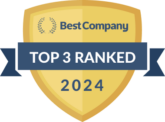Improving Your Social Media Engagement

What is “social media engagement” and why is it important for you and your business? Some may think it’s about the number of followers you have on any given social media network, but that’s only a small part of the story. After all, if you have a million followers that don’t read or interact with your posts, then how valuable are they as followers? Engagement is generally measured by the number of likes, shares, and comments a business or individual’s social media platform has. Engagement is all about quality over quantity.
Whether you are new to social media or just looking to improve, read the tips below to learn how to best engage your audience on Facebook, LinkedIn, Instagram, Twitter, and YouTube.
As mentioned in the opening paragraph, social media engagement generally refers to likes, shares, and comments; Facebook is no different in this regard. Depending on the type of post, engagement could also encompass clicks (if the post includes a hyperlink to open), and video views if your post contains a video. If you already have a lot of followers your Facebook page, you may be wondering why your engagement is so low. The fact is, even amongst your current followers, you are constantly competing for attention with all the other pages they follow. Long gone are the days when newsfeeds display all posts in chronological order; instead, Facebook uses an algorithm to determine who sees your content. The main driver of this algorithm is engagement. Bottom line- to increase the audience size for your posts, you need to develop a “reputation” with Facebook’s algorithm of having engaging posts.
So how do you accomplish this? First, consider the types of content you’re sharing. Even if your audience is primarily made of current, past, and potential clients, it doesn’t mean they want to hear about real estate 100% of the time. Sharing pictures and updates from your personal life will go a long way towards humanizing yourself and encouraging engagement. And even when you do post about real estate, don’t be afraid to throw some humor in there! Reposting funny memes about the real estate industry is an easy way to get lots of engagement- don’t be afraid to “steal” memes from your colleagues or other agents, or browse real estate topics on Reddit.
Another way to increase engagement is the structure of your content itself. Posts with pictures and videos generally see more engagement, as do posts that ask questions or encourage followers to contribute. For example, on or after the 4th of July you could encourage your followers to comment with pictures from their local fireworks displays.
We all strive to make our LinkedIn profile impressive to whoever may stumble upon it. But even the most well-built LinkedIn profile may experience low engagement if they aren’t using LinkedIn to its full potential. Be sure you are posting valuable and informative content for your network. If you don’t have any original content to post, find credible people with posts that you think can bring value to your network and share them. Share, like, and make thoughtful comments on your network’s posts as well as people out of your network. LinkedIn is all about showing off your expertise- whether by sharing the topics you’re reading about, or by adding your own commentary and opinions.
Another thing to consider with LinkedIn is your headline and how you’re presenting yourself to your network and potential new connections. Whenever you share a post, like or comment on a post, or send an invitation to connect, people will read through your profile. Make sure headline and description accurately represents your value and experience, encourage colleagues or past clients to leave reviews, and make sure to include links to your website or any other relevant work materials.
Do you know the most optimal time to post on Instagram to get the most engagement from your followers? According to, the best times to post on Instagram is Tuesday from 11AM to 2PM, and Monday through Friday at 11AM. While this is a good general rule of thumb, your followers may be a little different and respond to better week days and times. Experiment with different posting times and monitor your Instagram analytics to gauge what is giving you better engagement. Besides your normal posts and stories, branch out if you haven’t already by creating Instagram Reels. Reels allow you to post 15, 30, or 60 second videos with an in-app editing software.
Also, take full advantage of Instagram stickers such as the Q&A sticker, the poll sticker, the quiz sticker, and the slider bar sticker. These are all great tools to get engagement from followers and non-followers alike, and it also allows you to gain key insights about your audience. Remember, Instagram is all about visuals- so if you decide to be informative, make sure it’s still visually engaging. And don’t be afraid to get creative – Instagram is all about creativity, and the possibilities are really endless.
Twitter is naturally a text-driven social media platform, so utilizing picture and video on this site cannot be overlooked as it will stand out immediately. In fact, when on Twitter mobile, a picture or video post takes up more than half the user’s screen. Twitter defines engagement as someone liking your tweet, retweeting your tweet, quoting your tweet with a comment, replying to your tweet, @ mentioning you in a tweet, or clicking a link in your tweet. If you’re wondering how to boost engagement on your Twitter, make sure you are first:
- Engaging on other Twitter user’s tweets (like, retweet, quote tweet, sharing)
- Tweeting frequently (remember, quality over quantity still applies here)
- Tweeting at the times your target audience and followers are online
Other ways you can boost engagement on Twitter is to run giveaways, adding your Twitter feed to your website, and staying up-to-date with trends and hashtags and participating when appropriate for your business. And don’t forget to follow lots of accounts yourself- these could include relevant brands, thought leaders, your colleagues, and even your clients. Following an account is an easy way to encourage them to follow back, which increases your opportunity for retweets and visibility!
YouTube
YouTube is the world’s second-most used social platform, according to Hootsuite’s The Global State of Digital 2021 report – right behind Facebook. YouTube defines engagement as views, likes, dislikes, subscriptions, comments, and shares. YouTube may not be relevant for you personally- if you’re thinking of starting a YouTube channel, consider if:
- You have unique and engaging content to offer in these videos.
- You are experienced with video-editing software, or will work with someone who is.
If you answered “no” to the above, YouTube may not be a worthwhile venture for you.
If you’re struggling to get people to even click on your videos, you may want to re-evaluate your thumbnails and titles. Think about YouTube thumbnails like a billboard for your video and ultimately your business. You want to make sure your thumbnails are interesting and drawing attention; but also, are accurately describing what the user is in for if they click on your video. However, keep in mind that interaction time is a key factor in YouTube’s engagement algorithm- i.e., how much of your videos do people watch on average. Avoid making “click bait” titles and thumbnails that don’t accurately describe your videos because users will catch on quickly and click out of your video and you will not see a positive change in your engagement.
If you’re struggling to get engagement from your current subscribers, consider switching it up. Collaborate with other creators and channels, experiment with your video length, and listen to your audience by the likes, dislikes, and comment section. Most importantly, you need to be upfront with your audience about your goals for your channel. Simply ask your viewers to like, comment, subscribe, and share during your video. You can do this verbally or adding in annotations to your videos that call the user to action with a pop up. You’ll be able to see in YouTube analytics which annotations are working for you, and which one’s people are closing out of.
One more thing to remember- unlike the other social platforms we’ve discussed, YouTube audiences are generally more intent-focused. That is to say, the majority of audiences on YouTube are there to view a particular video, or there to watch videos on a particular topic. So even with the above recommendations, you’ll want to drive traffic from other channels to your videos. Make sure to promote your videos through other social media channels, or even in links on your website or marketing emails.




